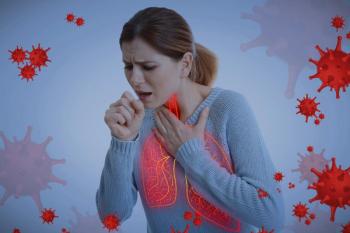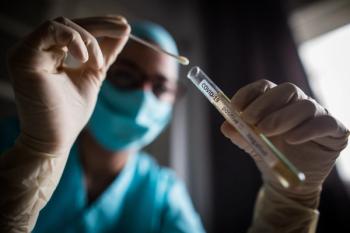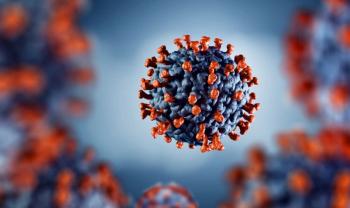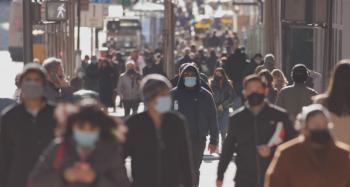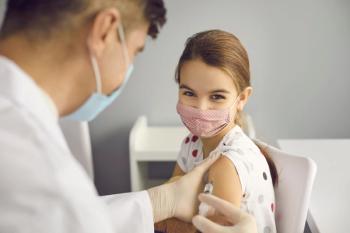
- Drug Topics January/February 2024
- Volume 168
- Issue 01
Nonpharmaceutical Interventions Reduced Hospitalizations, Deaths in Early COVID-19 Pandemic
Study authors noted the importance of their results as they apply to understanding the usefulness of intervention measures and preparing for future pandemics.
A new study has revealed that nonpharmaceutical interventions (NPIs) were generally associated with reduced rates of cases, hospitalizations, and deaths during the first 6 months of the COVID-19 pandemic. Findings were published in AJPM Focus.1
The unprecedented nature of the COVID-19 pandemic demanded a global response unlike any issued before. In the absence of standardized protocols, a patchwork of interventions emerged across nations. To this day, there exists controversy as to whether these responses worked or whether government officials made the best choices to protect people from the novel virus.
Although previous research has delved into the impact of these responses on alleviating the burden of the pandemic, investigators of the current study sought to create a more comprehensive picture of the impact of nonpharmaceutical interventions during its early stages.
“During the first wave (January 2020–June 2020), the unprecedented rapid spread of COVID-19 sparked varied responses from around the world–each country was reacting in a way that they believed to be most effective,” study authors said. “Still, there is much debate as to which NPIs are most impactful in mitigating the COVID-19 burden on related cases, hospitalizations, and deaths. This information can be extremely valuable to policy makers and government officials facing future waves of the pandemic and other viral outbreaks.”
In their meta-analysis, investigators extended previous literature by evaluating the impact of 10 NPIs on 3 outcome variables at 2, 3, and ≥ 4 weeks periodic lags after their implementation during the first wave of the pandemic. This time frame is important, authors noted, because by the second wave of the pandemic, governments and individuals had begun adapting to intervention measures.
“When assessing the impact of NPIs, considering the duration of effectiveness after implementation has paramount significance,” study authors wrote. “Although some NPIs may reduce the COVID-19 impact, others can disrupt the mitigative progression of containing the virus after 3 weeks. Policymakers should be aware of both the scale of their effectiveness and duration of impact when adopting these measures for future COVID-19 waves.”
Whereas past literature has studied the impact of NPIs on general health outcomes and mortality, investigators more thoroughly assigned the proportion of cases, hospitalizations, and deaths averted as their outcome variables. To compare like results, estimates were measured using 3 metrics that commonly appeared across the 44 papers included in the final analysis: cumulative, growth rate, and per capita effects.
Among the selected papers, 8 measured estimates for NPIs overall, 10 for policy stringency, 16 for shelter-in-place orders (SIPOs), 4 for social distancing, 7 for mask wearing, 6 for limited gatherings, 7 for business closures, 3 for bar/restaurant closures, 6 for school closures, and 7 for traveling restrictions/border closures.
Investigators found that policy stringency was associated with decreased per capita mortality across all lags (–0.13, –0.24, and –0.24 per 100,000, respectively) and that mask wearing was associated with mitigative effects for both cases (–2.76 per 100,000) and deaths (–0.19 per 100,000). Restaurant closures and travel restrictions were associated with decreased mortality after 4 weeks of implementation, translating to 1.08 fewer deaths per 100,000. SIPOs showed delayed impacts after 2 weeks of implementation on cases (–2.9 per 100,000).
Although results suggested that the 10 NPIs generally corresponded to decreases in case, hospitalization, and mortality rates in the first 6 months of the pandemic, there were some exceptions, authors wrote. Results that revealed that business closures did not produce negative point estimates after their fourth week suggest that their effects may have been temporary. Similarly, limited gatherings were linked to increased per capita mortality after the 2- and 4-week lags, suggesting that this intervention may not have been worthwhile.
“We found that wearing masks led to an estimated reduction of about 2.76 cases per 100,000 people and 0.19 in mortality. These effects sound small but are statistically significant,” James A. Peters, MSCM, PhD student and study author, said, noting the importance of the review’s results.2 “When you scale these numbers up to the millions, these measures could be preventing hundreds or thousands of deaths.”
Study authors further noted how their results could help facilitate understanding of the usefulness of intervention measures and prepare for future pandemics.
“If and when another pandemic occurs, we should be more prepared. We should know which policies are most effective at mitigating not only mortality, but cases and hospitalizations as well,” Peters concluded.
References
1. Peters JA, Farhadloo M. The effects of non-pharmaceutical interventions on COVID-19 cases, hospitalizations, and mortality: A systematic literature review and meta-analysis. AJPM Focus. Published online June 14, 2023. doi:10.1016/j.focus.2023.100125
2. Nonpharmaceutical interventions saved lives and eased burdens during COVID’s first wave, new study shows. News release. EurekAlert. January 16, 2024. Accessed January 17, 2024. https://www.eurekalert.org/news-releases/1031395
Articles in this issue
almost 2 years ago
Lecanemab-irmb Approved for Alzheimer Diseasealmost 2 years ago
OTC Product Roundup: Cough, Cold, and Flualmost 2 years ago
Stealing With Our Eyes Openalmost 2 years ago
2024 Pharmacy Forecast: A Focus on Mental Healthalmost 2 years ago
HHS Issues Reminder to Health Plans: Provide Contraceptive Coveragealmost 2 years ago
Paxlovid Found Not to Reduce Long COVID RiskNewsletter
Pharmacy practice is always changing. Stay ahead of the curve with the Drug Topics newsletter and get the latest drug information, industry trends, and patient care tips.

